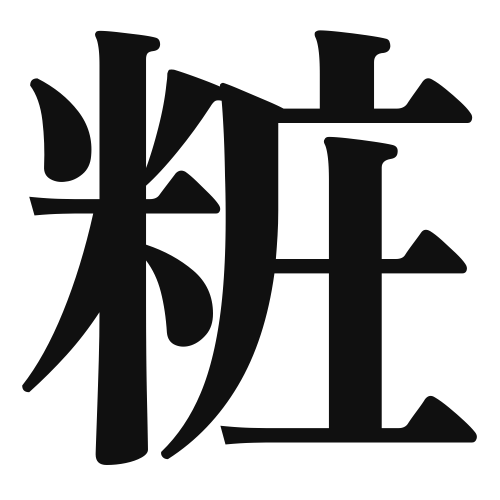1. Overview of Meaning
The kanji “粧” (shō) primarily means “to adorn” or “to decorate.” It is often associated with beauty and cosmetics, reflecting the act of enhancing one’s appearance.
2. Formation and Radical
Formation of the Kanji: The kanji “粧” is a phonetic compound (形声文字) that combines the radical for “grain” (米) with the phonetic component “将” (shō), which contributes to its pronunciation.
Radical: The radical of “粧” is 米 (rice), which is often associated with food and nourishment, but in this context, it relates to the idea of refinement and beauty.
3. Examples of Usage
Common Words and Phrases:
- 化粧 (keshō) – makeup
- 粧飾 (shōshoku) – decoration
Example Sentences in Daily Conversation:
- 彼女は毎朝化粧をします。 (Kanojo wa mai asa keshō o shimasu.) – She puts on makeup every morning.
- この部屋は粧飾が美しいです。 (Kono heya wa shōshoku ga utsukushii desu.) – This room’s decoration is beautiful.
4. Synonyms and Antonyms
Similar Kanji:
- 装 (sō) – to dress or to adorn, which has a similar meaning but can imply a more general sense of dressing up.
Antonyms:
- 剥 (haku) – to peel or to strip, which conveys the opposite idea of removing adornments or decorations.
5. Cultural and Historical Background
Relation to Japanese Culture: The concept of “粧” is deeply embedded in Japanese culture, where beauty and presentation are highly valued. Traditional practices such as the art of kimono dressing and the use of makeup in festivals reflect this significance.
Proverbs and Idioms: One common saying is “美は一日にして成らず” (Bi wa ichinichi ni shite narazu), which translates to “Beauty is not achieved in a day,” emphasizing the effort and care involved in adornment and self-presentation.
